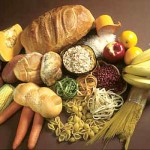Podcast 42: Will Immunity-Boosting Foods, Supplements and Super-dosing prevent COVID-19?
As we move through the rollercoaster ride of what’s been the last year and take
What gives you that sugar high? What about the sugar low? Our bodies require energy in order to carry out our daily  tasks: getting ready for our day, walking, thinking, talking, making meals, going to the gym, writing, reading —- just about anything you can think of. When we fuel our bodies with food, the different food items break down (digest), and are then sorted throughout our bodies towards the areas that need them in order to perform. When we over-indulge (energy in > energy out), the extra “energy” is stored in our bodies, ultimately as fat, leading to weight gain. So, what’s the primary fuel that gives us this energy? Sugar! Sugar, in the form of glucose, is the primary contender in feeding our brains and muscles, before other fuel sources are utilized.
tasks: getting ready for our day, walking, thinking, talking, making meals, going to the gym, writing, reading —- just about anything you can think of. When we fuel our bodies with food, the different food items break down (digest), and are then sorted throughout our bodies towards the areas that need them in order to perform. When we over-indulge (energy in > energy out), the extra “energy” is stored in our bodies, ultimately as fat, leading to weight gain. So, what’s the primary fuel that gives us this energy? Sugar! Sugar, in the form of glucose, is the primary contender in feeding our brains and muscles, before other fuel sources are utilized.
Where is it?
Sugars are a form of carbohydrate, and as such, are found on all Nutrition Facts Panels, under the “carbohydrate” heading. Sugar does not have a Percent Daily Value (%DV) associated with it, rather, helps you identify where your carbohydrate source comes from for a particular product. Yes, we need sugar each day, BUT you need to remember, that our sugar intake should come primarily from foods such as fruit, milk, vegetables, and small amounts of 100% real fruit juices. We need to steer clear from consuming large amounts of added sugar from candies, cookies, chocolate, baked goods, frozen desserts, jams and jellies, preserves, soda, and many of the items that simply contain too much of the product. Most often, it is the sugar content of a food that increases the calorie count of a product serving.
How to Find It?
The Nutrition Facts Panel will help you decipher how much sugar is in any given serving size of a particular food product. The ingredient list on any food package, is another key indicator of the amount and types of sugars found in a product. The ingredients of any food product are listed from the most available ingredient (in the product) to the least used ingredient in the product. So, if you are picking out a new cereal for yourself, or your family, and notice that the first ingredient is “sugar” (or any form of sugar, listed below), put the box down! Yes, we need a form of sugar (glucose) to start our day, and alert our brain, but it should NOT be the main attraction in our breakfast. Most ingredients ending in ‘–ose’ are a form of sugar (glucose, fructose, maltose, dextrose), so if these ingredients show up most often in an ingredient list, there is too much sugar in the product. Other sugar identifiers include:
Natural Sugar Alternatives include honey, syrup, agave, and sucanat (more familiar names), offering additional health benefits, HOWEVER, in order for your body to receive these benefits, you would still need to ingest large amounts of the “natural sources”, leading to high amounts of calories. It is better for you and your body to choose vegetables and fruits, whole grains, lean protein options and healthy fats to provide your body with the nutrients we need, and cure your sugar craving with a small treat each day.
Sugar Alternatives
Sugar Substitutes have been a huge addition to the food market, and food products, to provide that sweet bite to food items without the added calories. All sugar substitutes manufactured in Canada undergo large amounts of testing by the Food and Drugs Act and Regulations, before their use is permitted in food products. Commonly used Sugar Substitutes include:
 It is best to read up on the different sugar alcohols, the controversies associated with each, and the best methods to cook, bake, stew, etc with them, in order to enjoy them to their full potential. (http://www.hc-sc.gc.ca/fn-an/securit/addit/sweeten-edulcor/index-eng.php)
It is best to read up on the different sugar alcohols, the controversies associated with each, and the best methods to cook, bake, stew, etc with them, in order to enjoy them to their full potential. (http://www.hc-sc.gc.ca/fn-an/securit/addit/sweeten-edulcor/index-eng.php)
So, with the Holiday Season upon us, enjoy a treat every now and then, but make sure to follow a healthy diet, including vegetables and fruit, whole grains, lean protein and healthy fats, before you waste your daily calories on a second and third cookie 🙂
As we move through the rollercoaster ride of what’s been the last year and take
The uncertainty of COVID-19 has impacted everyone differently, but from a food security perspective, many